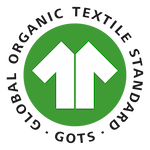- Clothes
- Bags
- Accessories
-
Inspiration
- Shoes

The jewellery industry relatively lags far behind other industries in terms of ethical production and transparency. Gold, silver and gemstones are beautiful miracles from nature, but unfortunately their mining is linked to human rights abuses, environmental degradation and exploitation.
In order to advance responsible business practices throughout the jewellery supply chain, the Responsible Jewellery Council (RJC) was established.
Some of the biggest brands in mining and jewellery retail have started the RJC as a non-profitorganisation in 2005, and in 2009 the RJC launched its certification system. They wish to increase consumer confidence in diamond, gold and platinum group metals jewellery.
They created a system of certification of responsible business practices, with the goal to become widely recognized and valued by their stakeholders. As of june 2021, they have grown from 14 founding members to 1424 global members across 68 countries, also including smaller jewellery organisations.
The Responsible Jewellery council has developed a methodology with metrics to measure their members' performance. These metrics are inspired by the UN Sustainable Development Goals and focus around the 5 P's:
The goal of the Responsible Jewellery Council to increase responsible business practices and transparency in the global jewellery supply chain is relevent, yet the RJC has received a lot of critique. The goals related to their metrics seem to have potential, but multiple sources state it is an ineffictive tool that cannot provide consumers with reassurance that the certified companies engage in ethical jewellery and mineral production and retail. This is related to the difficulties in the jewellery industry.
In this industry, ethical production and supply chain transparency is one of the most difficult to achieve. The minerals and metals are sourced from poor regions and pass from many hands on their way to the jewellery retailer. This is where traceability is lost.
Find out what's the story behind your clothing by understanding the certificates. Use the scores to discover at a glance what a certificate means in different sustainability areas.
Something that denotes wealth, status and artistry should come from an ethical source.
RJC has several points related to the UN Sustainable Development Goal related to our 'planet'. The main goals are:
Here, RJC has metrics on
The problem here, is that these metrics only focus on the certified organisation - overlooking the supply chain behind that organisation. Especially this supply chain is what the focus point of the RJC should be.
Score: 1/4 There are metrics on environmental topics, but they focus only on the practices of the certified company itself - overlooking the further supply chain.

Similarly, the metrics and measurements related to the goals of ethical production and fair trade do not pose an holistic approach on the supply chain. One of the goals related to fair trade is to make long term impact:
" A Jewellery and watch industry that is free from corruption, conflict and illicit activities"
However, the related metric is 'number of corruption incidences', meaning that the RJC member should report the number of confirmed incidences.
Soon since the RJC was established, a debate started whether the coucil can be trusted to run a code of practices on human rights and labour rights along the jewellery supply chain. The RJC is now again accused of poor governance and weak standards, shown by the example before.
A report from the Canadian Mining Watch says the RJC fails to consider the source of products, certifying companies as a whole instead of individual sites or facilities. After researching the methodology and metrics of RJC, we agree on this statement. The RJC fails to ban mining in conflict zones, demand limits on pollution in the supply chain or to protect labour workers and indigenous people in mining regions.
Score: 1/4 again, there are certain metrics in the methodology of the RJC related to fair practices, but they fail to actually work towards an industry free from corruption, conflict and illicit activities.

No impact has yet been measured by Resonsible Jewellery Council in the field of animal welfare.
Score: 0/4
RJC launches a yearly progress report that is easy accessible. However, the results in the report do not actually focus on improvements and abuses in the supply chain, but rather on the accomplishments with the company members.
Score: 2/4
In the RJC document on 'how to become a member' is more focused on the membership fees and how the company gains a competitive edge from being an RJC member.
The membership requirements do not fully focus on the positive impact that the RJC member is making in the jewellery industry, related to the metrics in their methodology framework.
They also do not conduct independent audits at the members.
Moreover, the RJC fails to include a variety of stakeholders, which could be an explanation for their weak standards. The board if completely formed from companies and trade associations. Civil society is missing, while best practices in certification have generally been multi-stakeholders processes where civil society and companies create the certification systems and the code of practices.
Score: 1/4 The certification only consists of pledging to agree with the RJC mission and paying the membership fee.

B Corp

Global Organic Textile Standard

Cradle to Cradle
Together we can make a difference! Subscribe to the newsletter to stay up to date about fair and sustainable fashion. We plant a tree for every subscription! 🌳